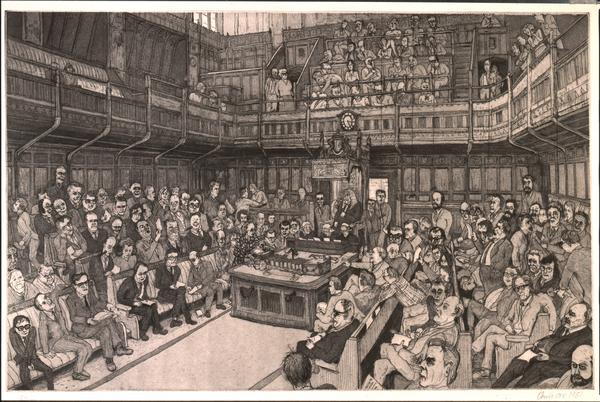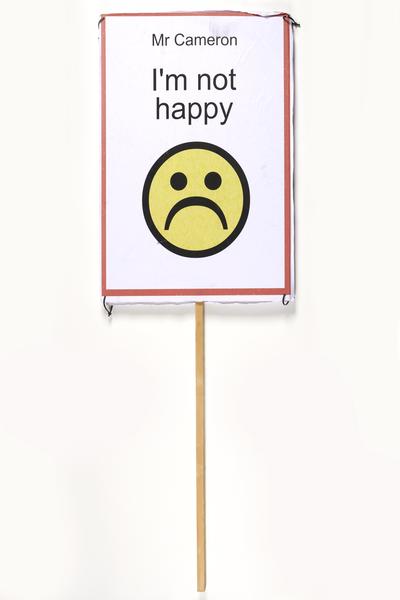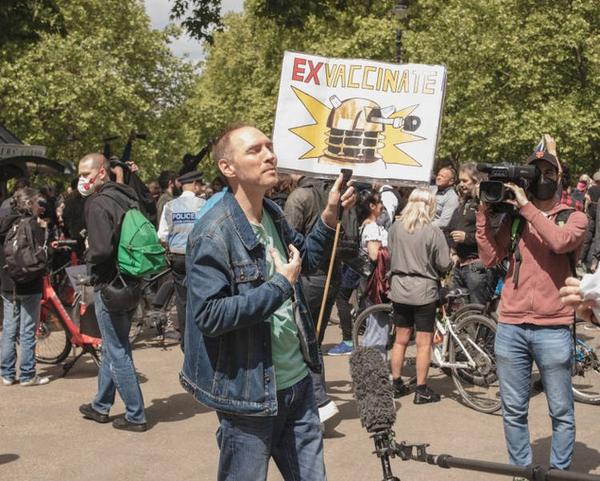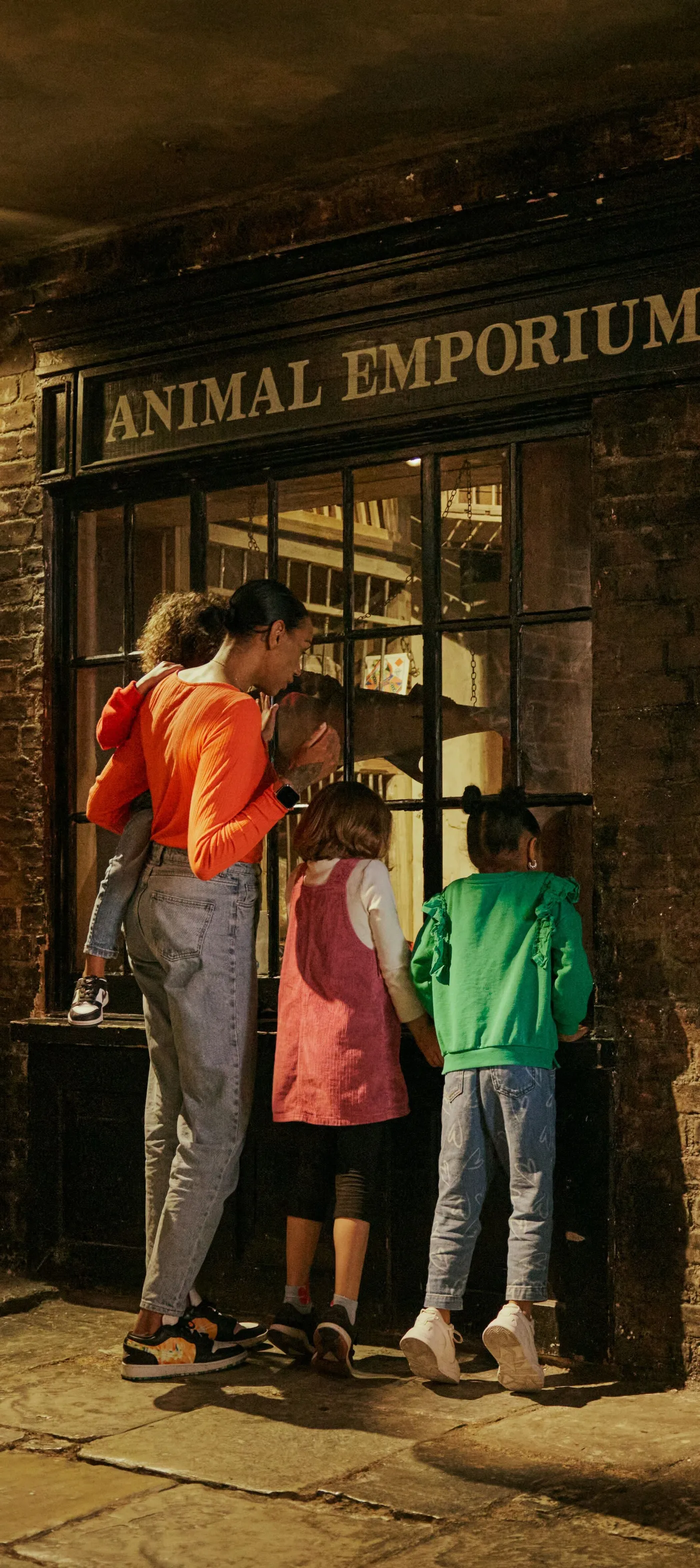The People’s Vote marches against Brexit
In 2019, in one of the biggest protests London has seen, hundreds of thousands marched to call for a second referendum on the UK’s relationship with the EU.
Parliament Square, Westminster
23 March 2019

Britain divided
For several years, Brexit seemed to dominate every conversation. Breaking news never stopped. Emotions ran high on both sides of the debate. And Westminster became the scene of regular and long-running protests.
The largest public expression of opinion – other than the 2016 referendum itself – was the People’s Vote demonstration on 23 March 2019.
Hundreds of thousands of people from across the country packed into central London, calling for a second referendum on the UK’s future relationship with the European Union (EU).
So far, a second referendum hasn’t been held. In 2019, Prime Minister Boris Johnson called a general election, winning renewed backing for Brexit. The UK left the EU on 31 January 2020.
What was the Brexit referendum?
In 2014, the Conservative Prime Minister David Cameron announced a referendum on Britain’s membership of the EU. The EU is an economic and political union of 27 member states founded on the free movement of people, goods and services among its members.
UK voters were offered a choice on whether to leave or remain in the EU. Politicians supporting ‘Leave’ included Boris Johnson and Nigel Farage. Cameron and London’s Labour mayor Sadiq Khan supported ‘Remain’.
After a fierce campaign, the referendum was held on 23 June 2016.
What was the referendum result?
It was a narrow victory for ‘Leave’ – 52% of voters opted to leave the EU and 48% chose to remain. In London the results were very different – 60% of voters backed ‘Remain’.
But the UK couldn’t leave the EU immediately. The UK’s economy, laws and politics were intertwined with the EU. A major concern was the 1998 Good Friday Agreement, which had brought peace to Northern Ireland and still affects how the country’s governed. British and Irish participation in Europe was woven into the terms of that agreement.
The UK government had to negotiate with the EU to decide how the two countries might trade and collaborate in the future. The UK government also had to win the backing of Parliament on any deal they made.
With so much to agree, and so many differing opinions, the process of leaving took years.
Why did people want a second referendum?
Before the referendum, it wasn’t clear what the post-Brexit relationship with the EU might be. Public debate was dominated by misinformation.
The idea of a second referendum aimed to give people a final vote on the actual terms of the UK-EU agreement. Voters could accept the deal, refuse it, or possibly even choose to remain in the EU.
It was a contentious idea. Some saw it as an attempt to rerun the first referendum and reverse the democratic decision to leave.
The second referendum was championed by the People’s Vote campaign, an alliance that brought together a number of pro-EU groups and Members of Parliament (MPs) from different political parties.
At times, Labour, the Liberal Democrats and the Scottish National Party (SNP) all called for a second referendum on the final settlement with the EU. But there was plenty of disagreement within political parties on this issue.
When were the People’s Vote marches?
The People’s Vote campaign organised significant marches in London in June and October 2018 and March and October 2019.
The largest was on 23 March 2019. Organisers claimed that a million people attended the demonstration. Another estimate put the number significantly lower, between 300,000 and 400,000.
Protesters marched from Hyde Park Corner to Parliament Square carrying EU flags and banners saying “put it to the people”. The procession stretched for two miles.
The mayor of London, Sadiq Khan, spoke at the march. So did SNP leader Nicola Sturgeon.
Brexit sparked years of protest in London
The artist Jeremy Deller’s film Putin’s Happy, which is now in our collection, shows how protesters from both camps could regularly be found around Westminster in the years after Brexit.
Steve Bray, more commonly known as ‘the Stop Brexit man’, spent years protesting in Westminster by heckling politicians and interrupting television broadcasts.
Many pro-Brexit protesters were similarly committed. They criticised the amount of time it took the UK government to officially leave the EU. To some, it was a betrayal of the ‘will of the people’. Some wanted a ‘no-deal Brexit’, which would have ended all trade agreements and threatened the Good Friday Agreement.
Was there ever a second referendum?
No. The idea was debated in the House of Commons, but failed to win the backing of a majority of MPs.
The closest thing to a second referendum was the December 2019 general election, which Boris Johnson used as his mandate to push Brexit through.
Johnson took over from Theresa May as prime minister in July 2019 after May had failed to get Parliament’s backing for her Brexit deal.
In October 2019, Johnson won Parliament’s backing to hold a general election. He campaigned on a promise to “get Brexit done”.
In December 2019, he won a decisive general election victory, securing a large majority in parliament.
Johnson negotiated a new settlement with the EU and, crucially, got MPs to vote for it. Britain officially left the European Union on 31 January 2020.








